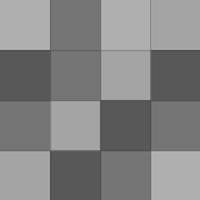Man, I thought I was the only one who found that easter egg! I think I spent a whole afternoon (or two, or three) just entering random basketball names to see what would pop up.

People make the argument that "the regular refs could make these mistakes too," and they'd be half right. The regular refs are susceptible to errors in judgment just as the replacements are. The difference here is, the replacements are making errors in the administration of the game (timeouts, penalty enforcement,…
As someone who works both HS and Division III NCAA football, I can tell you that there is a huge difference in both talent and game speed just between those two levels. The difference between Division III and FCS is even bigger, and likely even bigger than I realize since I've only worked spring games and offseason…
Took me a second to realize what was going on, but a tip of the cap to you, Mr. Newell.
+5 unearned runs
Actually, Gibson is a bit out of position for this play. He does the correct thing by moving directly back from the point of home plate, but then should have taken a step or two to the first base side, aligning himself with the third-base line extended. He put himself in a very bad position by kneeling where he did.…
Technically, although more accurately the destination code for the pipe at the end of the minus world sends the Mario sprite to a non-existent place, and so the program simply sends the Mario sprite back to the beginning of the level.
No need, all you need to do is use a hex-code trace program and/or an emulator to see that the code used to generate the destination of the pipe glitches and resets the level. (Not that I've ever done anything like that...well...maybe I have...)
Actually, this is not exactly correct. The "minus world" is actually a non-programmed World 36. I'll spare you all the technical jargon, but here is the explanation of the glitch: http://www.mariowiki.com/Minus_World
All of these officials, while probably more than capable at the levels from which they came, are clearly overmatched when it comes to working this level of football. The white-hats are the worst example, unfortunately - usually you work in the NFL at another position for a few years before even being considered for…
Being blackballed by the union is one concern, yes. However, more to the point, I've had multiple assignors make it clear that if anyone who works for them were to take any kind of NFL replacement assignment, he/she would not be eligible to work for them at all this season or (in some cases) in future seasons.
The biggest problem is that even if the NFL didn't expressly prohibit BCS-conference officials from working as replacement referees, it's likely that level of official wouldn't work it anyway - in fact, any referee (myself included) who aspires to work NFL football legitimately one day would never work as a…
I'm going to (obviously) take the other route and defend Holbrook in this instance. Greinke was ejected because he spiked the ball in apparent dispute of the call. Had the play not been close, the situation would have been very different. He -has- to be ejected because while he may have been mad at himself, to the…
I'm 100% certain (and I'm almost as certain Diaz said the same thing to Bob Melvin) that neither the 1st nor 3rd base umpires would have had any angle to give Diaz any new information. Diaz was 20 feet away from the play, looking directly at it, whereas the first- and third-base umpires were a good 80-85 feet away and…
The problem is, "borderline" is a very nebulous concept. If an umpire does not make an immediate call, it's not because he didn't see the play - he's simply making sure he's seen everything relating to the play. 99% of the time (statistics guaranteed or your money back!), calls are missed (especially on fair/foul and…
He's not hesitating, he's making his decision. In an ideal situation, the umpire tracks the ball from pitcher's hand to catcher's mitt. He then decides if at any point it went through the strike zone. As umpires, we're taught to watch, decide, call. Too quick a decision, and you might not register the late movement…
In MLB rules, you'd be right, but high school rules are slightly different - the high school rulebook (which I assume is what these two teams were playing under) states that the runner is out if he runs more than three feet outside a direct line between bases to avoid the tag. (I know this only because the NCAA uses…
This is a difficult call, for a number of reasons -
Umpires work for years on their timing, especially behind the plate. What seems an "obvious" ball/strike to you, may not be so obvious to the plate umpire, who wants to make sure he's making the right call. If the umpire is too quick to signal, he more than likely will get it wrong (especially on a borderline pitch).
Lots of things blow up here, but the big one is the runner should have been called out for a baseline violation. The umpire moves to his left instead of straight back, and as a result has no angle on the runner's direction. If he were to step straight back, he could have read the play, taken a step to his right, seen…

